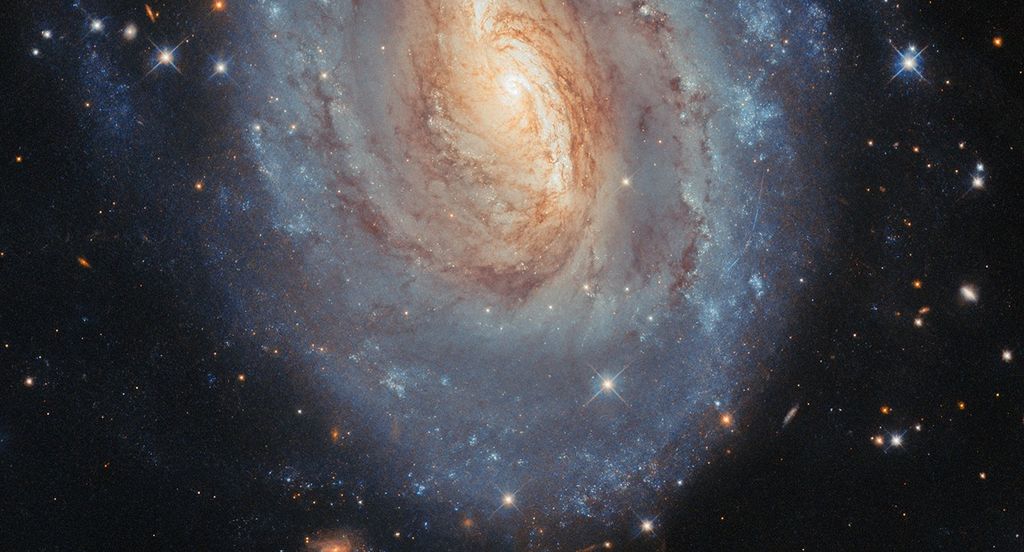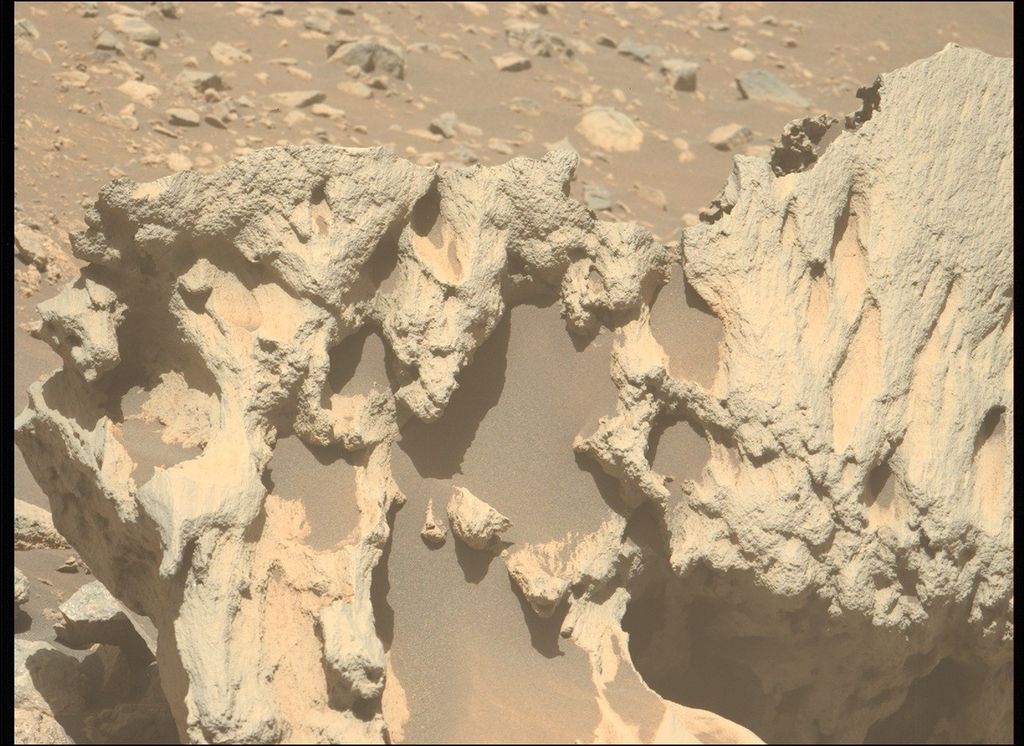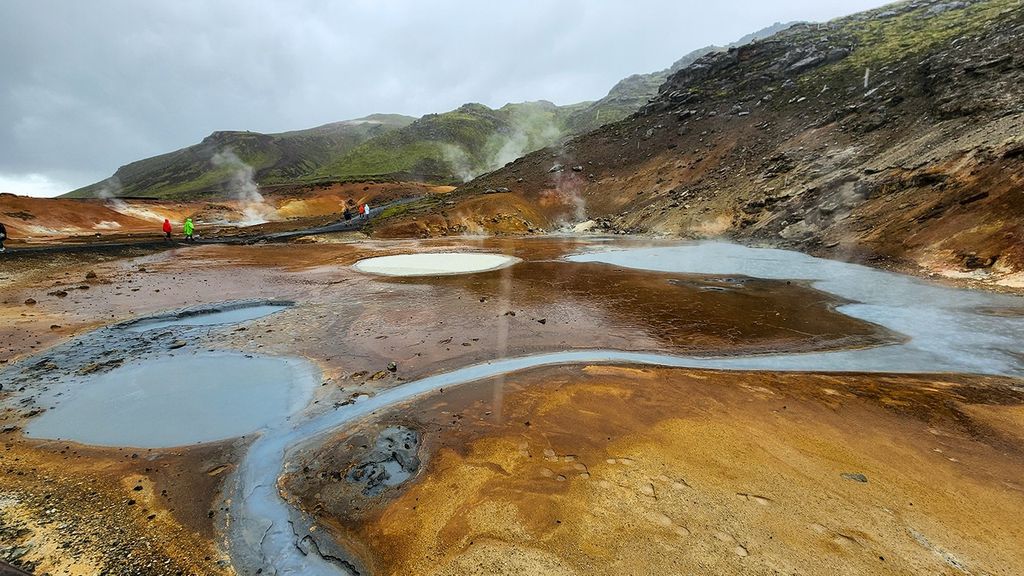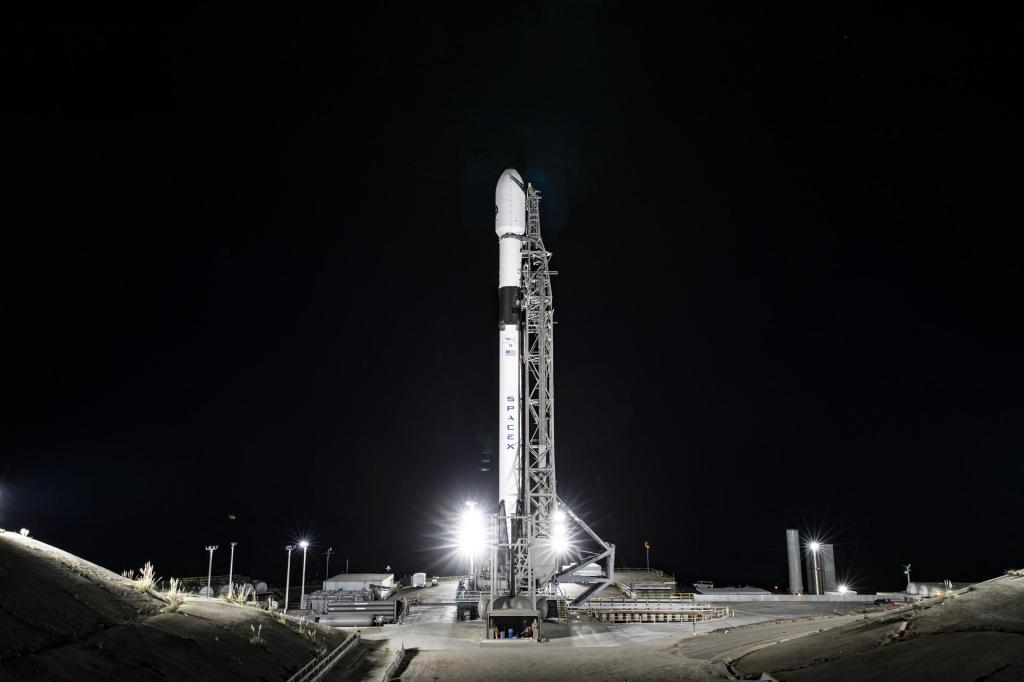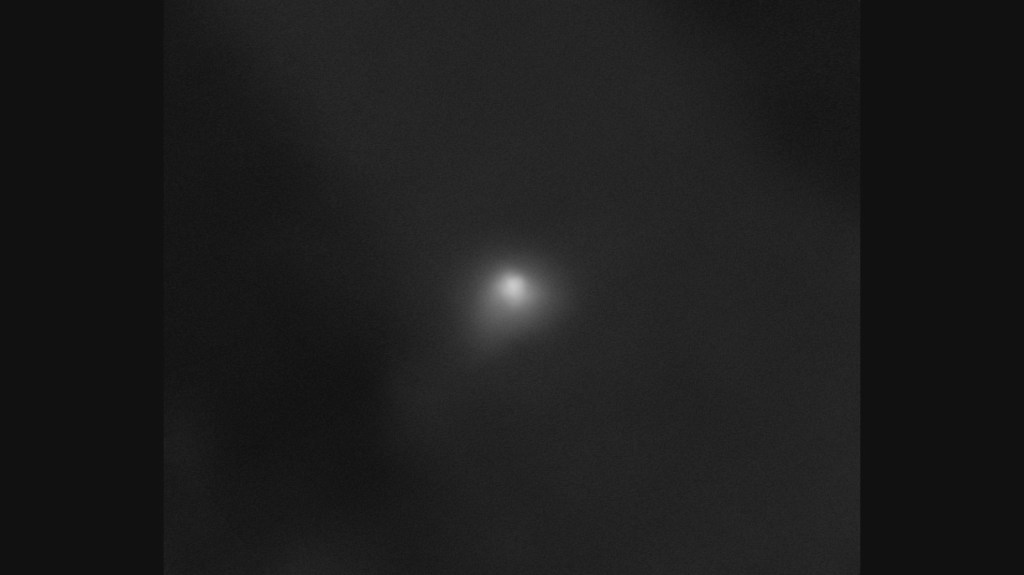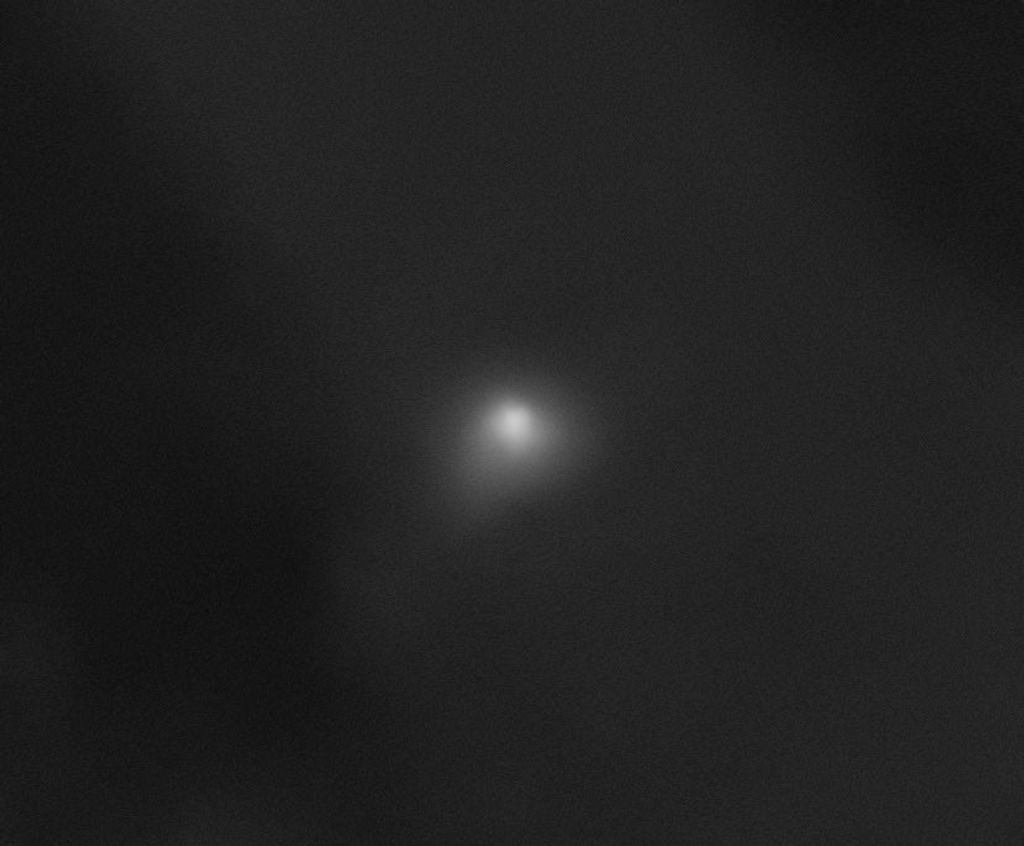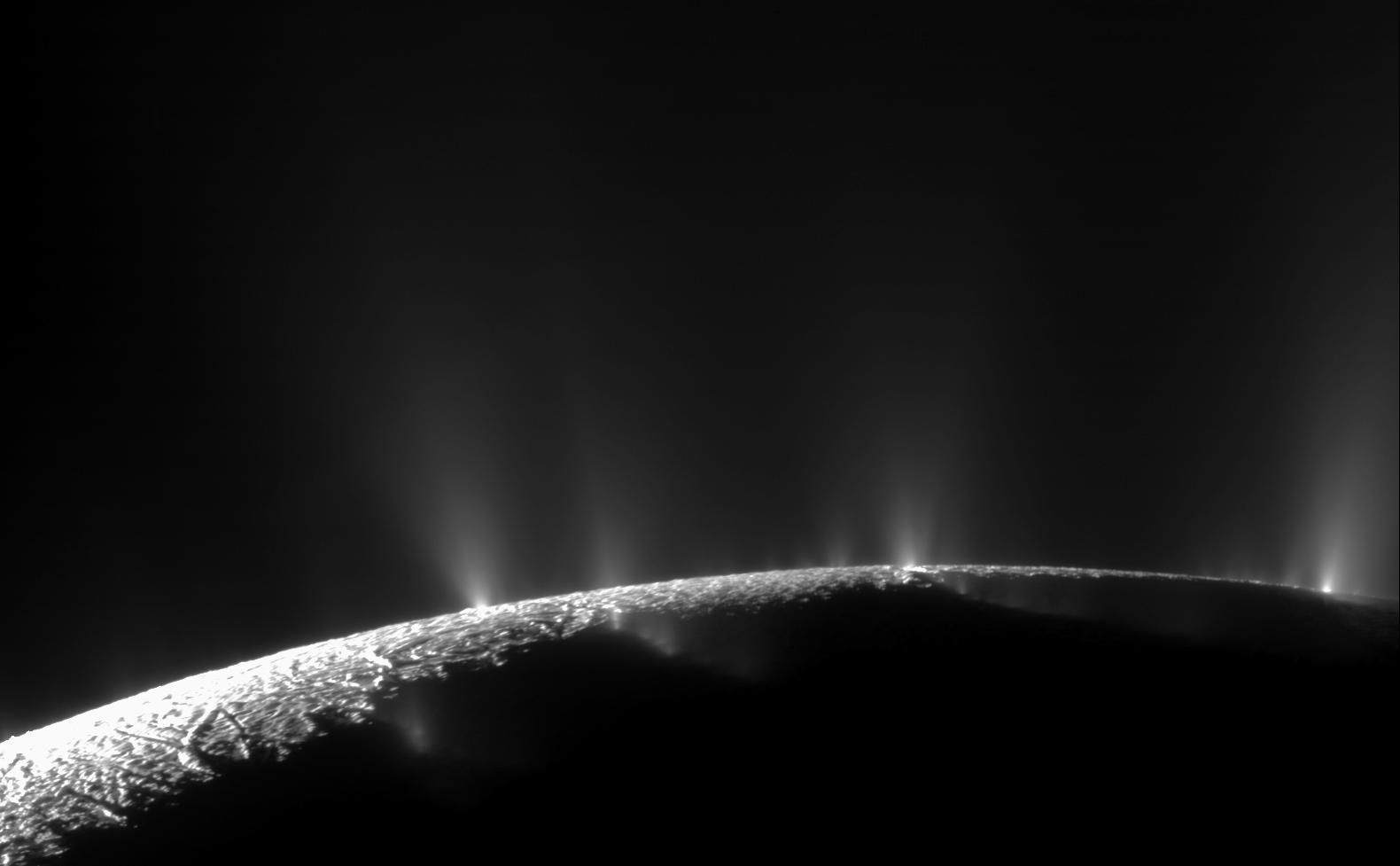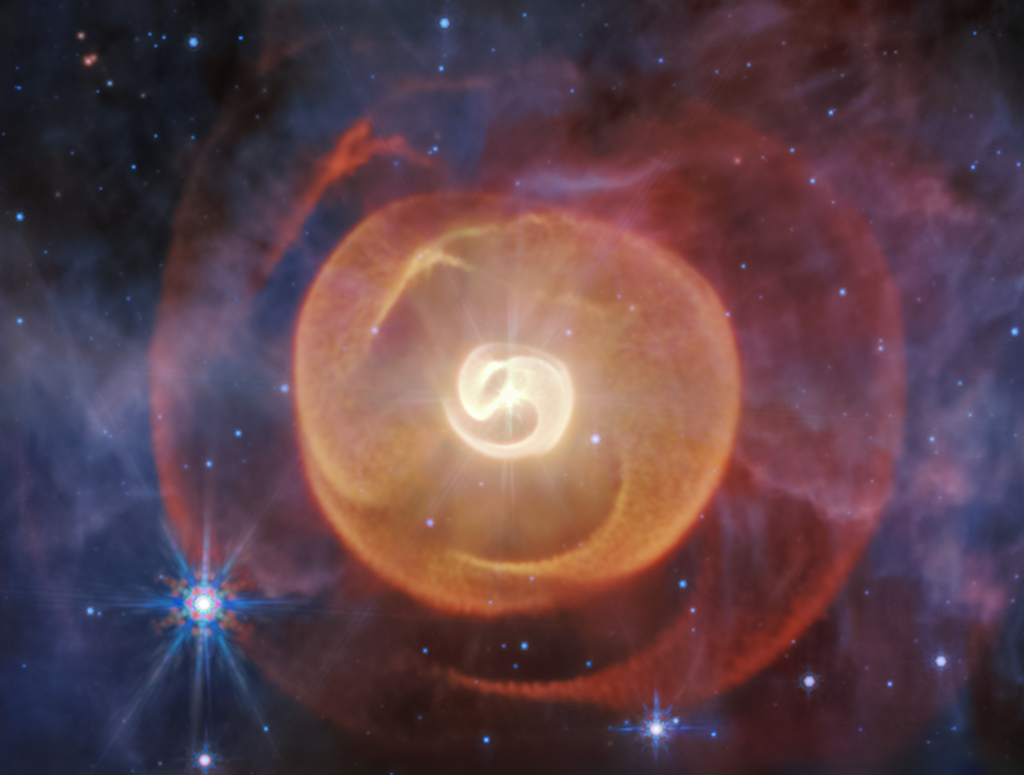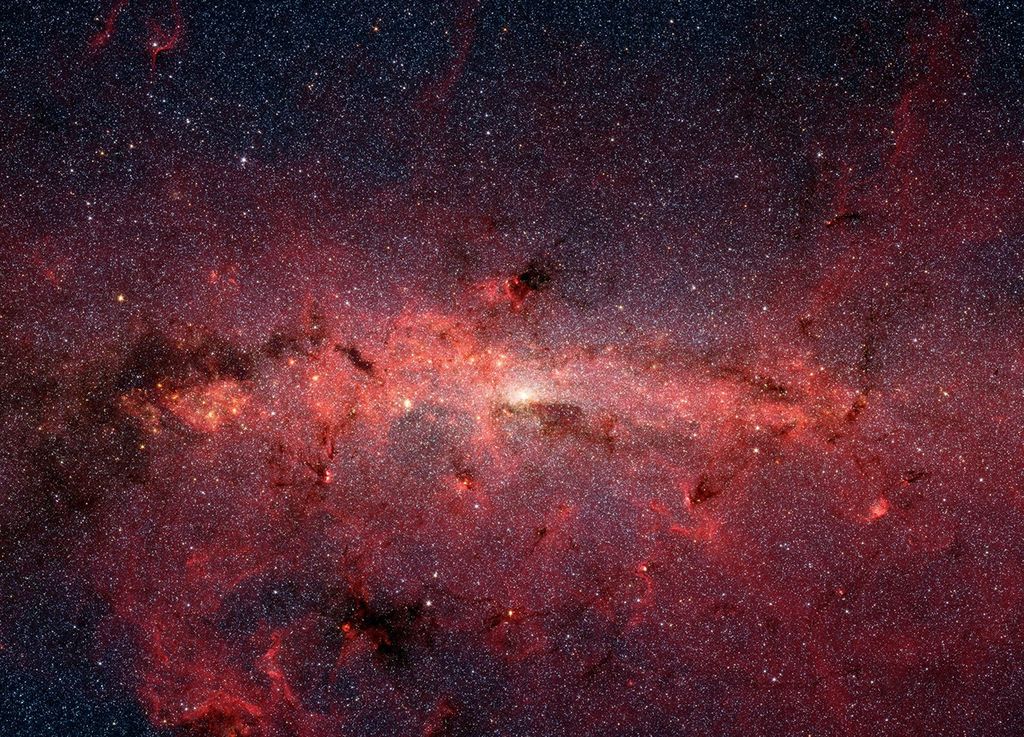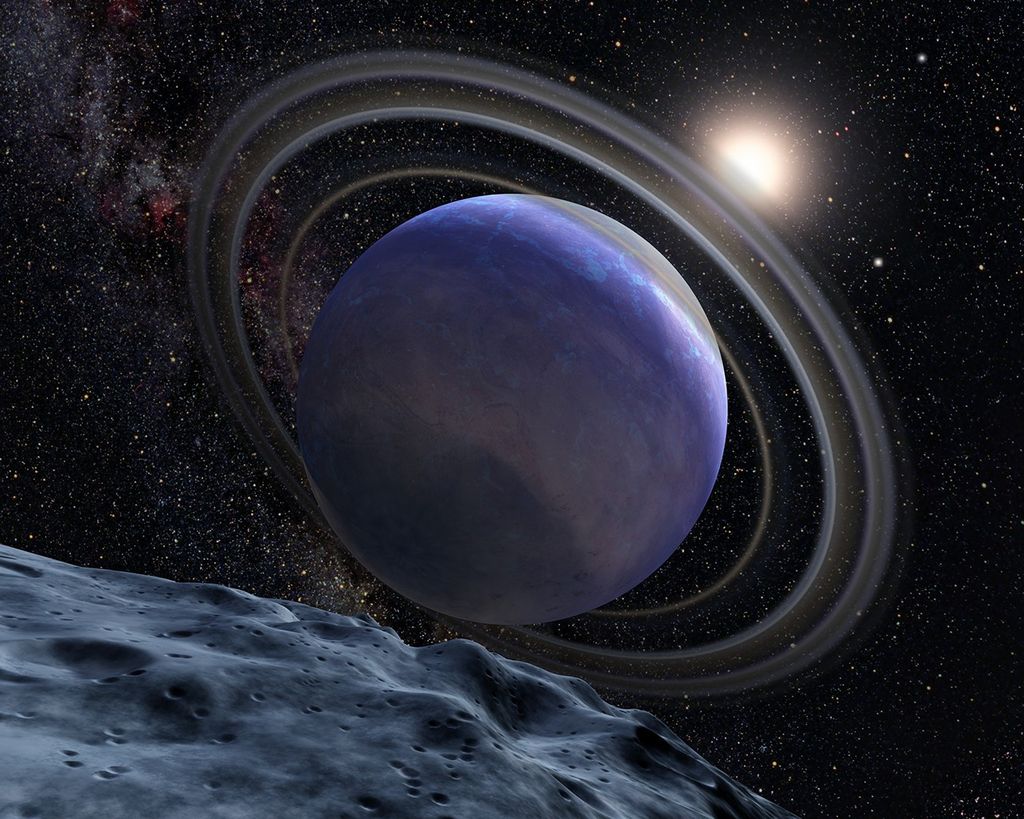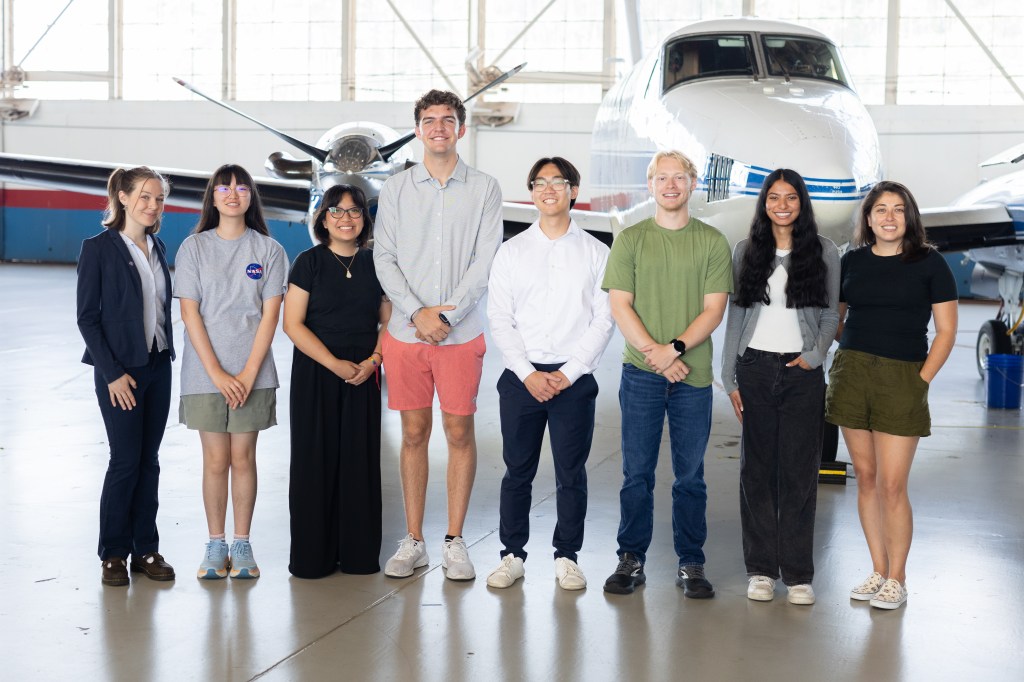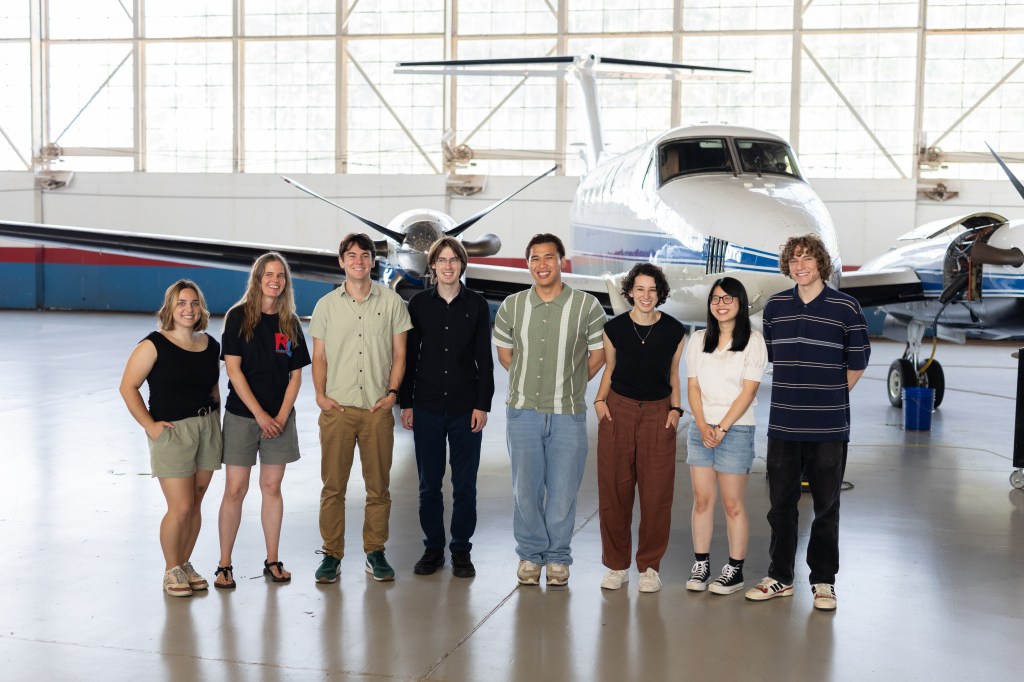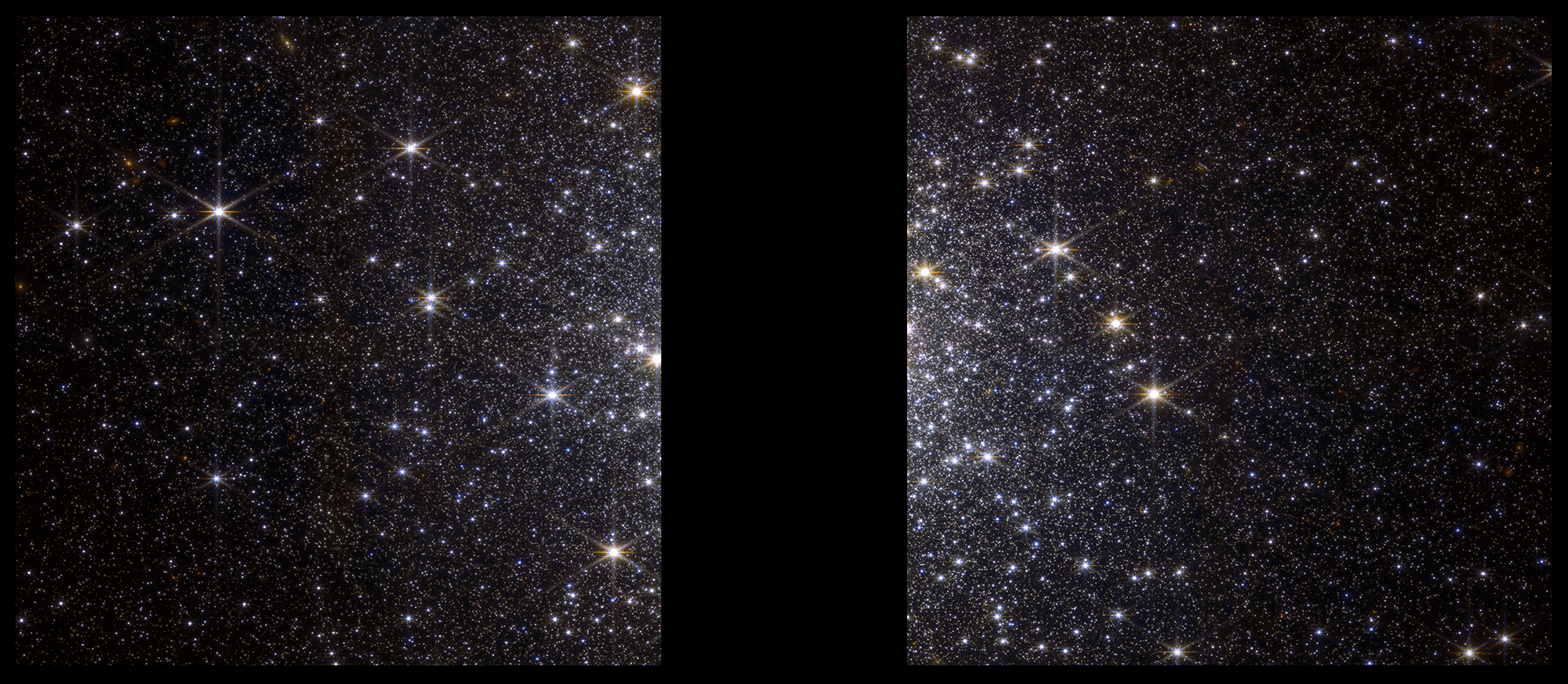On June 20, 2022, the James Webb Space Telescope spent just over one hour staring at Messier 92 (M92), a globular cluster 27,000 light-years away in the Milky Way halo. The observation – among the very first science observations undertaken by Webb – is part of Early Release Science (ERS) program 1334, one of 13 ERS programs designed to help astronomers understand how to use Webb and make the most of its scientific capabilities.
Image of the globular cluster M92 captured by the James Webb Space Telescope’s NIRCam instrument. This image is a composite of four exposures using four different filters: F090W (0.9 microns) is shown in blue; F150W (1.5 microns) in cyan; F277W (2.77 microns) in yellow; and F444W (4.44 microns) in red.
The black strip in the center is a chip gap, the result of the separation between NIRCam’s two long-wavelength detectors. The gap covers the dense center of the cluster, which is too bright to capture at the same time as the fainter, less dense outskirts of the cluster. The image is about 39 light-years across.
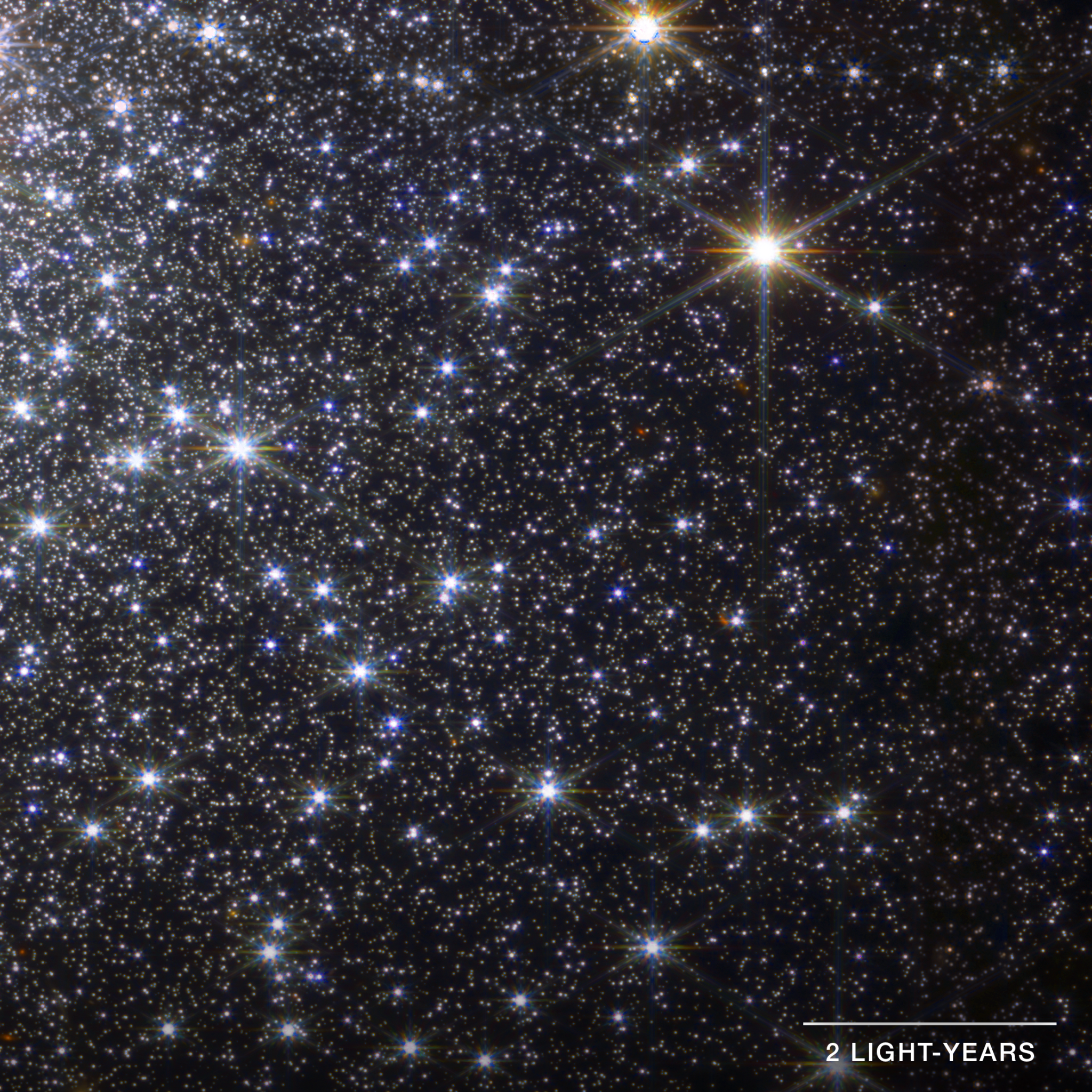
Detail of the globular cluster M92 captured by Webb’s NIRCam instrument. This field of view covers the lower left quarter of the right half of the full image. Globular clusters are dense masses of tightly packed stars that all formed around the same time.
In M92, there are about 300,000 stars packed into a ball about 100 light-years across. The night sky of a planet in the middle of M92 would shine with thousands of stars that appear thousands of times brighter than those in our own sky.
The image shows stars at different distances from the center, which helps astronomers understand the motion of stars in the cluster, and the physics of that motion.

